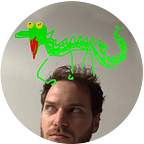Designing Fiction
This is a summary of the study A Pragmatics Framework for Design Fiction by Joseph Lindley.
[Design Fiction is the] Deliberate use of diegetic prototypes to suspend disbelief about change (Sterling, 2012)
Design Fiction is a new methodology that is rapidly taking over design academia (though perhaps a bit behind IRL design). The concept is pretty simple: make prototypes of things that do not exist and ponder over them. However, as professionals, we should never be so frivolous with our methodologies. The following reports on Joseph Lindley’s findings of the bounds and limitations of Design Fiction as a methodology for designers.
Referencing the “Diegetic” component of Sterling’s definition, a Design Fiction prototype must always tell a story. Specifically, the prototype must tell a story that considers “the social, political and economic changes people will encounter.” This is in contrast to some of the fluffier prototypes that tech companies often put out, which imagine utopian, glossy high-net-worth-indiviudal customer journeys.
On this point, many Design Fiction prototypes happen to be films. There’s something about film that really helps to tell the story of a prototype. However, it is possible to create other types, more often called artifacts. These can be installations, galleries, or even narratives and pamphlets.
The outcome of a prototype rarely even the point: Design Fiction is primarily a research exercise. There are three ways that Design Fiction is used. First, it’s for reflecting upon. That means after a piece has been created, it is then exposed to the public to judge how they respond to a new paradigm or solution. The second is as a method to discover new knowledge. While having a goal of creating a speculative work, researchers can discover new understanding about their users, materials, or context that is being designed for. The third is simple as a methodology for researching another problem. In our practice, we often use a technique called Future Headlines that lets us imagine how the public would respond to our service or product. Quite a fun tool actually!
In short, Design Fiction is a new and exciting tool for the design community. There are many elements to be experimented with and explored. However, with an intentionality of creating prototypes to respond and learn from, there is little harm from speculating about the future in your design efforts. Live long and prosper!
Do you know what Experience Design is?
What do you know about Experience Design? Well then smarty pants, share your thoughts! We’re happy to publish pretty much anything on the topic. Comment here or send a reply and we’ll get the conversation going.
